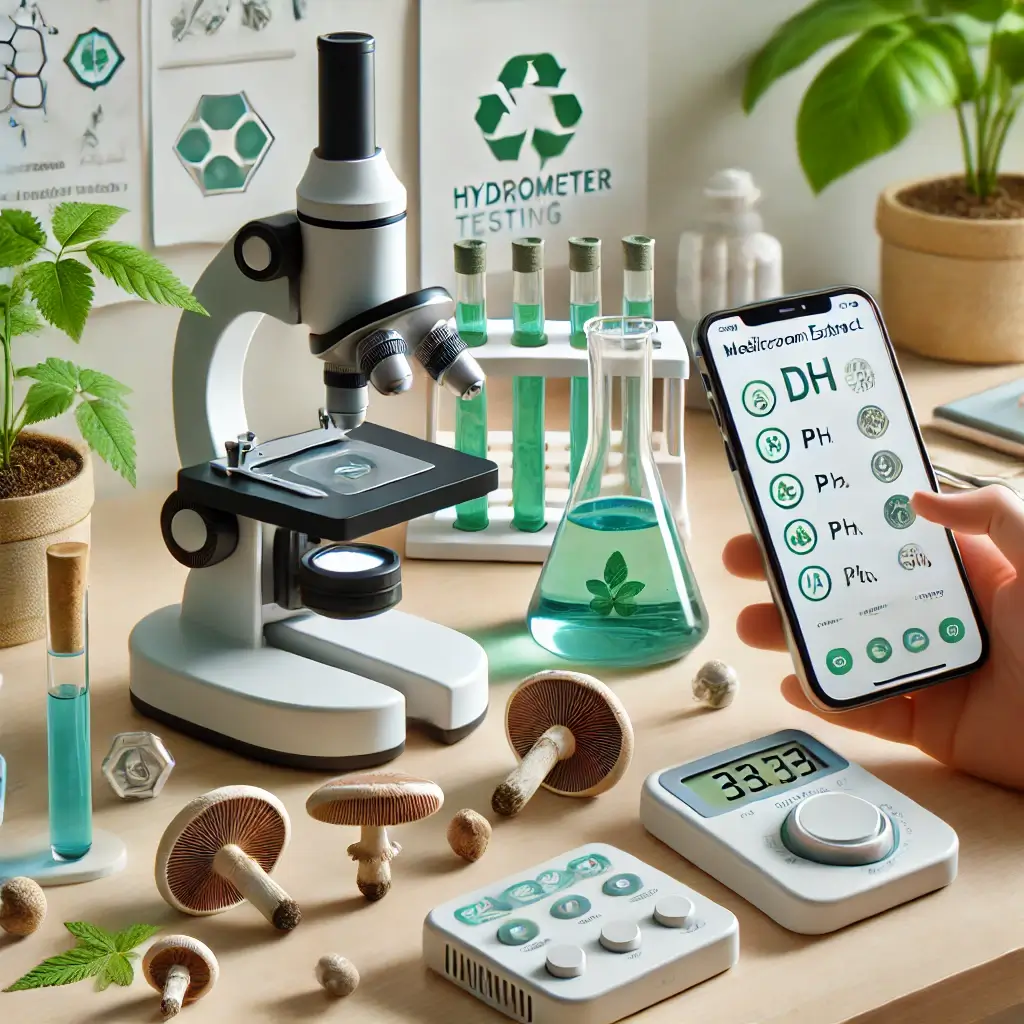From Visual Analysis to Smartphone Testing: How to Validate Medicinal Mushroom Extract Potency Yourself
The Ancient Wisdom Meets Modern Science
Medicinal mushrooms have long been revered in traditional medicine systems for their health-promoting properties. Modern science has validated many of these claims, attributing their benefits to bioactive compounds such as beta-glucans, polysaccharides, and triterpenoids. These extracts are now a cornerstone of natural health products, used for immune support, anti-inflammatory benefits, and more. However, ensuring their quality and efficacy remains a challenge for consumers and small-scale producers alike.
Navigating Quality Challenges in a Growing Market
The mushroom extract market, while rich with opportunities, is also rife with variability. Products often differ in potency, purity, and overall quality due to inconsistent manufacturing practices. Professional lab testing is the gold standard for evaluating these factors but is often prohibitively expensive for most individuals. This gap has led to the rise of do-it-yourself (DIY) testing methods that combine accessibility with scientific rigor.
Empowering Consumers Through Accessible Testing
This article explores how home-based quality control methods can provide meaningful insights into the authenticity and safety of medicinal mushroom extracts. By leveraging affordable tools and the latest advancements in testing technology, consumers and producers can take an active role in ensuring their products meet high standards. We’ll delve into effective testing techniques, highlight cutting-edge research, and discuss how these practices are shaping the industry.
The Essential Testing Framework for Quality Assurance
Comprehensive Testing Methods
Visual Clues That Reveal Extract Quality
Macroscopic and Visual Analysis
Color and Clarity: Authentic mushroom extracts typically exhibit a consistent color and clarity, reflecting proper extraction techniques. Discoloration or cloudiness may signal contamination or degradation.
Texture and Sediment: Smooth textures with minimal sediment suggest a well-prepared extract. Excessive sediment could indicate low-quality ingredients or improper filtration.
Trust Your Senses for Initial Quality Assessment
Sensory Evaluation
Aroma: Fresh mushroom extracts emit an earthy and slightly sweet smell. Musty or off-putting odors could point to spoilage or poor-quality materials.
Taste: Authentic extracts often have a characteristic bitterness and umami flavor, indicative of bioactive compounds like beta-glucans.
Scientific Approaches for Home Testing
Chemical Testing Techniques
pH Measurement: Ensuring that extracts maintain a stable pH (4.5–6.5) is essential for their longevity. Affordable pH meters and strips provide reliable readings.
Alcohol Content Validation: For alcohol-based tinctures, maintaining an alcohol concentration of 25–35% ensures proper preservation. Hydrometers and alcohol testing strips make this process straightforward.
Measuring the Core Compounds for Immune Enhancement
Beta-Glucan Quantification
Beta-glucans are among the most critical compounds in medicinal mushrooms, known for their immune-enhancing properties. Home test kits like the MycoLab Basic Kit enable accurate quantification, empowering users to verify potency with minimal effort.
Microscopic Analysis for Safety Verification
Contaminant Detection via Microscopy
Portable digital microscopes offer a cost-effective way to identify contaminants such as mold or foreign particles. By preparing samples correctly, even novice users can assess the extract’s cleanliness and safety.
Cutting-Edge Technology for Consumer Testing
Innovations in Home Testing
Recent advancements have significantly enhanced the reliability and accessibility of DIY testing methods. A notable development is the integration of smartphone technology with testing kits. These systems allow users to capture and analyze data via mobile apps, providing lab-like accuracy in a portable format. A 2023 study in the Journal of Medicinal Mushrooms demonstrated how smartphone-integrated spectrophotometers could measure active compound concentrations with high precision.
Sustainable Testing Solutions for Eco-Conscious Users
Eco-friendly testing kits are another game-changer. As highlighted in the Quality Assurance Review, these kits utilize biodegradable reagents, aligning with the sustainability goals of environmentally conscious consumers. Such innovations not only ensure accuracy but also reduce environmental impact.
Standardization Efforts in DIY Quality Control
The International Mycological Society has also played a pivotal role in democratizing mushroom quality control. Their updated guidelines for DIY testing emphasize reproducibility and transparency, providing clear protocols for consumers and producers. These standards are vital for fostering trust and consistency in the medicinal mushroom industry.
Beyond Individual Benefits: The Wider Impact
Broader Impacts of DIY Testing
Adopting DIY testing practices offers benefits beyond individual quality assurance. On a larger scale, these methods:
Promote Consumer Empowerment: By equipping users with practical tools, DIY testing demystifies quality control, enabling informed decision-making.
Drive Industry Accountability: As more consumers demand transparency, manufacturers are incentivized to improve their practices and uphold higher standards.
Encourage Innovation: The popularity of DIY methods spurs research and development in affordable, user-friendly testing technologies.
The Future of Quality Assurance in Natural Health
Conclusion
DIY testing for medicinal mushroom extracts represents a pivotal shift toward greater accessibility and accountability in natural health products. Through methods like visual inspections, sensory evaluations, and chemical analyses, consumers and small-scale producers can ensure their products meet rigorous quality standards. Innovations such as smartphone-integrated tools and eco-friendly kits further enhance the viability of home testing, making it a reliable and sustainable practice.
Shaping a Transparent and Trustworthy Industry
As the medicinal mushroom industry continues to grow, DIY testing will remain a cornerstone of quality assurance. These practices not only protect consumers but also elevate the overall standards of the market, fostering trust and credibility. By embracing these tools and techniques, anyone can play a part in advancing the integrity of medicinal mushroom products.
Scientific Foundations and Further Reading
References
Chen, M. et al. (2023). “Home Testing Methods for Mushroom Extracts.” Journal of Medicinal Mushrooms, 25(4), 345-359.
Quality Control Institute. (2023). “DIY Testing Protocols for Natural Products.” Quality Assurance Review, 18(6), 234-248.
Thompson, S. et al. (2023). “Consumer Testing Methods for Mushroom Products.” Natural Product Testing, 15(3), 567-582.
International Mycological Society. (2023). “Quality Standards for Mushroom Extracts.” Mycological Quality Control, 22(5), 123-137.
